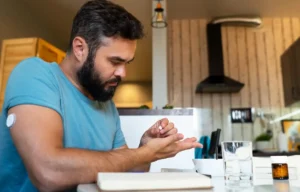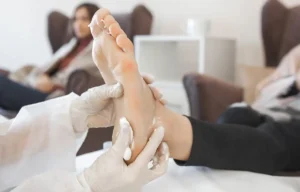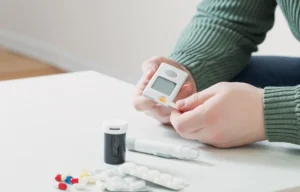Bone Tuberculosis: What You Need to Know
Bone tuberculosis, also called skeletal tuberculosis or osteoarticular tuberculosis, is a rare but serious condition that affects the bones and joints. It is caused by the same bacteria responsible for pulmonary tuberculosis, Mycobacterium tuberculosis. While TB is common in Pakistan, bone tuberculosis is less frequent but can have a lasting impact on a person’s life. This form of tuberculosis is known as extra-pulmonary TB because it occurs outside of the lungs, often spreading to the bones through the bloodstream or lymphatic system.
What are the Symptoms of Bone Tuberculosis?
Bone TB most often affects the joints in the spine. In fact, only about 2-3% of cases affect other joints like the hips or knees. Some common symptoms include:- Joint Pain: Constant pain that worsens over time in the affected joint.
- Swelling: Swelling and tenderness around the affected bone or joint.
- Stiffness: You may notice stiffness and limited movement in the affected area, especially in the morning.
- Fever: A mild fever that might be accompanied by night sweats.
- Fatigue: You may feel unusually tired or weak.
How Does Bone Tuberculosis Happen?
Bone tuberculosis occurs when the TB bacteria spread from the lungs (or other organs) to the bones or joints. This can happen through the bloodstream or lymphatic system. People with weaker immune systems, like those with HIV or other health conditions, are at a higher risk. Once the bacteria invade the bones, they cause inflammation, leading to the symptoms mentioned earlier.How is Bone Tuberculosis Diagnosed?
If you think you might have bone TB, there are several ways a doctor will diagnose it:- Clinical History: Your doctor will ask about your symptoms, any past TB exposure, and your general health.
- Physical Exam: The doctor will examine the affected joint or bone to check for swelling, tenderness, or restricted movement.
- Imaging Studies: X-rays, CT scans, or MRI scans will help doctors visualize bone or joint damage.
- Biopsy: In some cases, a biopsy may be taken to check for Mycobacterium tuberculosis.
What Lab Tests Help in Diagnosing Bone Tuberculosis?
If the diagnosis isn’t clear from imaging alone, your doctor might order some additional lab tests to confirm bone tuberculosis:- Mantoux Test: A skin test that checks for a reaction to TB.
- Blood Tests: Tests like the interferon-gamma release assays (IGRAs) can help detect TB infection.
- Culture: Culturing a sample from a biopsy to confirm the presence of the TB bacteria.
Treatment for Bone Tuberculosis
Treating bone tuberculosis usually involves a combination of antibiotics, and sometimes, surgery:- Antibiotics: The primary treatment for bone TB is a long course of antibiotics. Common drugs include isoniazid, rifampin, ethambutol, and pyrazinamide. It’s important to complete the full course of treatment, which can last several months or even up to a year. Note: Never miss a dose of your medication. If you do, you’ll have to restart the treatment from the beginning.
- Surgery: In some severe cases, surgery might be necessary. This can involve removing infected tissue, draining abscesses, or stabilizing the bones to prevent further damage.
- Supportive Care: Along with medication and surgery, you may need:
- Pain management to relieve discomfort.
- Physical therapy to improve joint function and prevent deformities.
- Monitoring: Regular check-ups will help your doctor track your recovery.
- Nutrition: A healthy diet can support your immune system.
- Rest: Resting and immobilizing the affected joint, if necessary, is vital for recovery.
Preventing Bone Tuberculosis
While bone TB can be serious, it’s possible to reduce your risk with some simple precautions:- BCG Vaccine: The Bacillus Calmette-Guérin (BCG) vaccine can help protect against severe forms of tuberculosis, though it may not be effective in all cases.
- Avoid TB Exposure: Limit contact with people who have active TB, especially in poorly ventilated areas. If you have to be in close contact with someone who has active TB, wearing a mask can help.
- Early Detection: If you notice symptoms of TB, like a persistent cough, unexplained weight loss, or night sweats, seek medical attention early. This can prevent TB from spreading to the bones.
- Good Hygiene: Practice good hygiene, such as washing your hands frequently and covering your mouth when you cough or sneeze.
- Regular Screening: If you’re at a higher risk, such as being in close contact with TB patients or living in areas with high TB prevalence, regular screening can help detect TB early.
- Maintain a Healthy Lifestyle: Eating well, staying active, and getting enough rest helps keep your immune system strong, which can prevent infections like TB.












